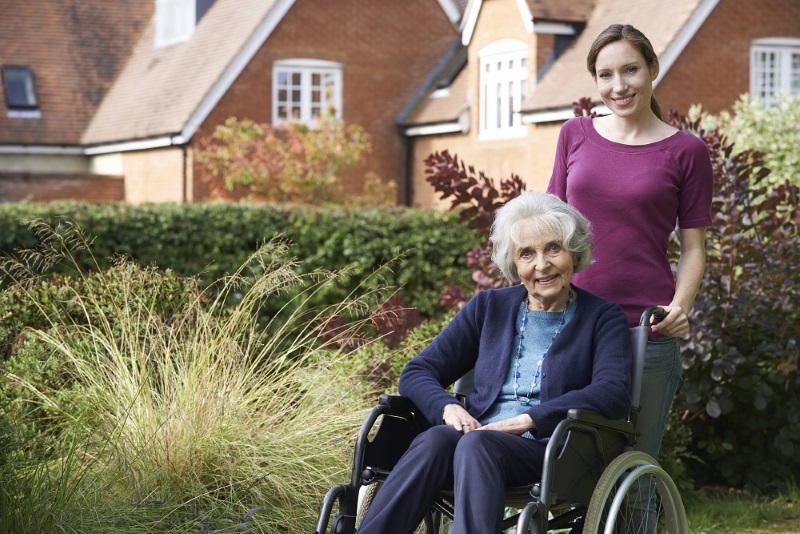More Than 40 Million Caregivers in America Face Burdens, Stress

The number of caregivers in America continues to grow, reaching 40 million in 2015. And the need for them will do nothing but increase in the coming years as the country’s population ages.
That finding comes from a report done by the National Alliance of Caregiving and the American Association of Retired Persons (AARP). They found the typical caregiver is a 49-year-old woman providing care for a 69-year-old woman (typically the younger woman’s mother). The caregiver usually has a regular job – typically 35 hours a week – and also works as much as 24 hours a week as a caregiver.
They also get little help. Only 53 percent of the 1,248 caregivers in America surveyed in the report said they receive any help from another unpaid worker such as a family member or friend.
Experts say caregivers need to reach out for support from friends and family members. Organizations such as Hope Grows, which offers support for caregivers in Pennsylvania, can also ease their burden.
“You have to take care of yourself to take of others,” Kristin Litzelman, a professor at the University of Wisconsin-Madison, told Wisconsin Public Radio. Litzelman researches the effects of stress on the health of caregivers.
“If you’re not taking care of yourself, there’s no way you can provide help to someone else. You won’t have the physical strength or the emotional strength,” she said.
The Burden and Stress
While caregiving is one of the most selfless things a person can do for another, the burden and stress associated with caregiving can prove high. Among the findings in the report:
- 40 percent of all caregivers in America said they have a “high burden” of care
- Half of those surveyed said they had no choice but to take on caregiving duties
- Those caring for a partner or spouse reported the highest hours of providing caregiving, an average of 44.6 hours a week
Adding to the burden are financial costs. In a 2016 study, AARP reported that the average caregiver spends $6,954 out-of-pocket each year on caregiver expenses. This equates to 20 percent of their average annual income, according to AARP.
Meanwhile, they provide a service for free that is, collectively, worth billions. Using 2013 figures, the AARP estimated that 40 million family caregivers provide 37 billion hours of care worth about $470 billion. That’s more than the total spent on Medicaid that year or the combined annual sales of Apple, Hewlett Packard, IBM and Microsoft.
“Clearly, family caregivers could use a break,” the AARP article states.
Support For Caregivers in America
Experts believe that while caregivers offer an incredibly valuable service, they face heavy burdens in terms of emotional and financial stress.
“We’re especially concerned that not enough is being done to support family caregivers in the public or private sector as they age,” Gail Gibson, CEO of the National Alliance of Caregiving, said in statement on the AARP report. “There’s a double-edged sword when we fail to support caregivers, because we put both the caregiver and the care recipient at risk.”
On the financial side, a majority of caregivers said in the survey they would favor getting some type of income tax break for providing caregiving.
On the emotional side, agencies like Hope Grows provide caregivers a break from the stress of the work they do by providing caregivers with gardens they can tend, helping them with exercise and the ability to temporarily focus on something different.
Others can offer assistance by simply taking care of a few daily chores such as grocery shopping, laundry, mowing or raking leaves. Even these small gestures can have a big impact of caregivers.
For caregivers, the bottom line is to seek support from organizations designed to provide caregivers an outlet from their day-to-day stress. Not doing so will not only impact their quality of life, but also the care they provide for their loved one.
